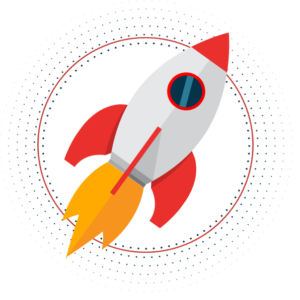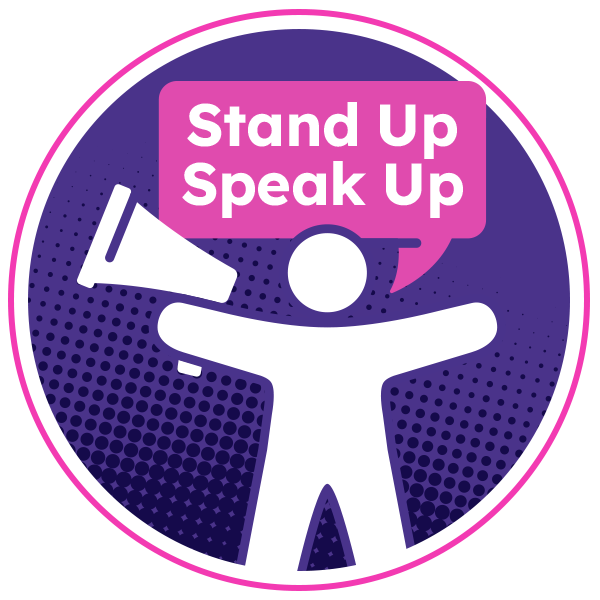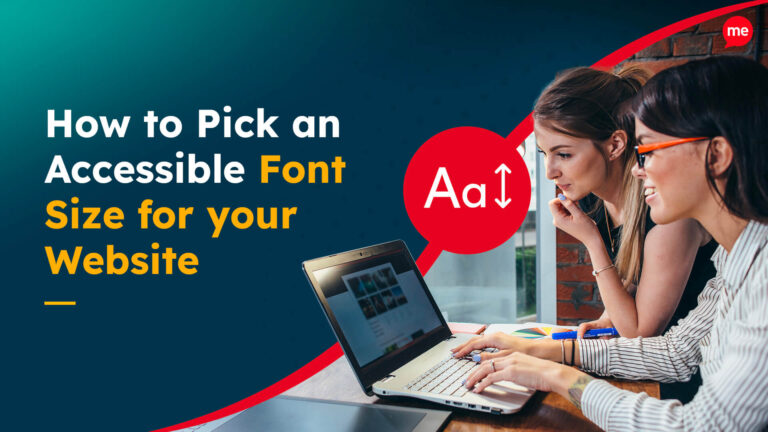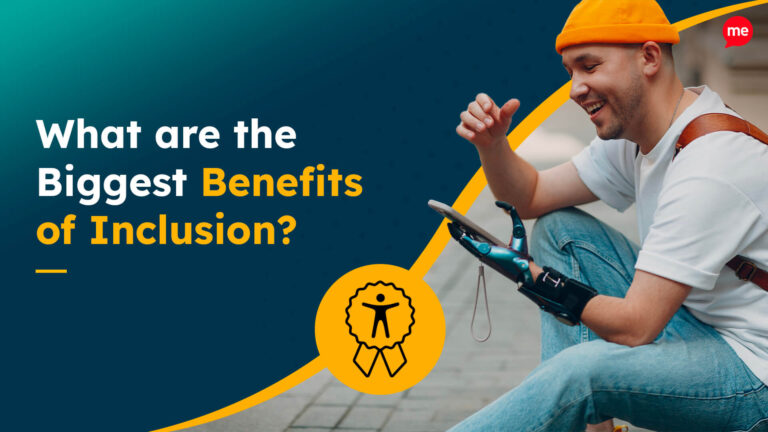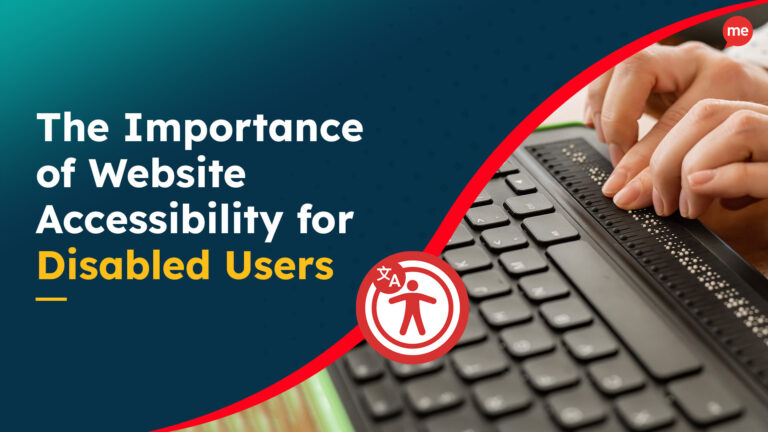As we hurtle towards the end of another amazing year of progress, it’s time to reflect on digital accessibility and dedicate some time to building even more awareness about the importance of inclusion for all.
Recite Me’s very own ‘Accessibility to Me’ week will run from 13th-17th November. It’s the third year we’ve coordinated this week-long awareness campaign. Building on the success of previous years, we’ll be creating a dedicated platform/community where everyone can share their thoughts and best practices, and come together to create even more accessible experiences.
Stand Up, Speak Up
The theme of this year’s Accessibility to Me week is ‘Stand up, Speak up’.
Unfortunately, despite some significant progress in recent years, disability discrimination still exists in workplaces across the nation and worldwide.
Ultimately, it’s up to each individual business to stand up for employees and customers to create inclusive experiences. This year, we’re asking businesses to speak up and share examples of what they are doing to develop diverse, inclusive, and supportive organisational cultures.
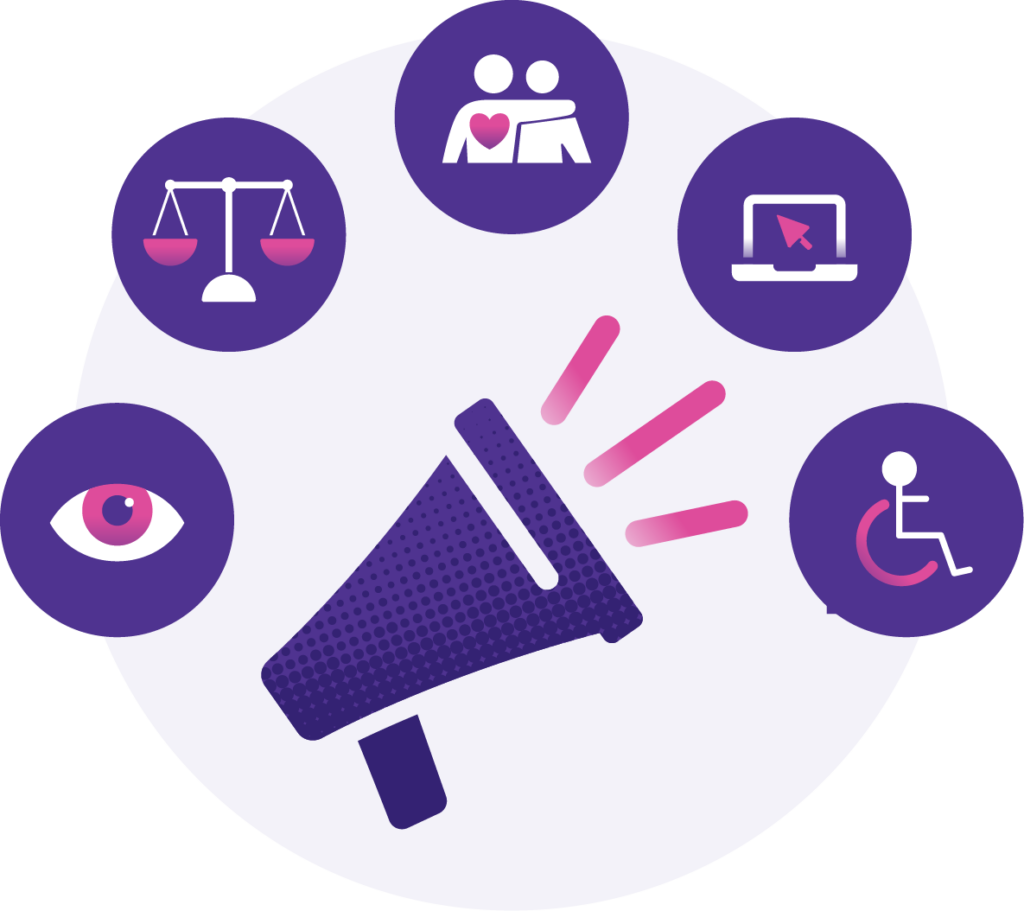
What Does Accessibility Mean to You?
All answers are valid, as every individual and organisation will have different needs based on their unique circumstances.
For employees with physical disabilities and mobility problems, many accessibility barriers remain physical. To them, accessibility might mean wheelchair ramps, elevators, accessible bathrooms, reserved parking, and workspaces with adjustable desks and chairs.
However, not all disabilities are physical. In fact, it’s estimated as many as 80% of all disabilities are hidden. Hidden disabilities encompass a broad range of conditions, including:
- Vision impairments like blindness, partial blindness, blurred vision, deaf-blindness, and colour blindness.
- Neurodivergent traits like dyslexia, dyspraxia, hyperlexia, and dysgraphia.
- Attention disorders like attention deficit hyperactivity disorder (ADHD).
- Autism.
- Learning disabilities.
- Hearing loss.
For employees with hidden disabilities, accessibility considerations are more likely to include factors like signage and wayfinding aids, captioning and transcripts on digital content, accessible documentation and communication tools, and assistive technology like screen readers and voice recognition software.
Why is Accessibility Important in a Digital Setting?
Digital accessibility revolves around making the virtual world as inclusive and accommodating as the physical one. Ensuring that no one is left behind is essential in today’s digital age, where people spend an average of 400 minutes online every day. We have all come to rely on the internet for everyday tasks like shopping, banking, and checking the weather, in addition to more critical tasks like applying for jobs and researching healthcare options, etc.
In a workplace setting, digital accessibility ensures that all employees, regardless of their abilities or disabilities, can fully participate in all aspects of their jobs. The sense of inclusivity gained by embracing all forms of accessibility fosters a diverse and representative workforce, which leads to enhanced productivity, creativity, innovation, and problem-solving.
The Business Case for Accessibility
For organisations striving to attract and retain the best talent, accessibility plays a pivotal role. Ensuring your workplace is inclusive and accommodating to job candidates and employees with disabilities is not just a matter of ethics. It’s a vital business consideration.
By making accessibility a core part of your company’s culture and values, you not only create a more inclusive work environment, you can also gain a competitive edge in the marketplace. Here’s how:
Talent Attraction
When your company actively promotes accessibility, it sends a powerful message to potential job candidates. It demonstrates your commitment to diversity and inclusion, making your organisation appealing to a broader range of talent, including individuals with disabilities.
Reputation Enhancement
A workplace that values accessibility is likely to be seen as forward-thinking and socially responsible, and companies prioritising digital accessibility tend to have a stronger brand image. This doesn’t set you apart as an employer of choice. It makes your company more attractive to consumers who appreciate organisations with a strong social conscience.
Increased Employee Loyalty
When employees with disabilities feel valued and supported in the workplace, they are more likely to be loyal and engaged. This can reduce turnover and save on recruitment and training costs. Plus, it’s been proven that employees with disabilities take fewer days off and stay in jobs longer than other workers.
Improved Productivity
Accessible workplaces benefit all employees, not just those with disabilities. Ergonomic workstations, accessible documentation and communication processes, and flexible work arrangements improve the overall work environment and boost productivity for everyone.
Legal Compliance
Non-compliance with accessibility laws and regulations like the Equality Act can result in costly legal battles, which can damage your company’s reputation. Ensuring your workplace is accessible minimises the chances of falling foul of the relevant industry guidelines and mitigates unnecessary legal risk.
Increased Revenue
Inclusive workplaces are typically more in tune with diverse customer needs. Companies that value accessibility are better positioned to tap into a broader customer base that includes disabled consumers and their families – a market segment with a spending power of £274 billion per year.
Diverse Perspectives
An inclusive workplace brings together employees with diverse backgrounds and experiences, which can be a valuable asset for your organisation. Research shows that diverse companies with inclusive teams are 87% better at decision-making, are 1.7 times more innovative than their competitors, and more likely to capture new markets.
Competitive Advantages
Businesses prioritising accessibility distinguish themselves from their competitors across local and global marketplaces. Because fewer than 10% of businesses have plans in place to access the disability market, organisations that embrace accessibility best practices before their competitors stand to gain traction as an industry leader.
How Recite Me Support Accessibility and Inclusion
The entire team at Recite Me is dedicated to removing the digital barriers that hinder people with disabilities. Our goal is to empower organisations to meet accessibility guidelines, standards, and regulatory requirements by providing tools and services that enable businesses to embrace accessibility as a core value.
To that end, we’ve developed a suite of accessibility on-demand solutions to help employers navigate the complexities of digital accessibility.
Download Your Digital Inclusion Toolkit
Check out our Online Accessibility and Inclusion Toolkit which is packed full of helpful information and practical tips. The toolkit covers the complete landscape of online accessibility including:
- 10 Website Design Tips for an Inclusive Website
- How to Write an Accessibility Statement
- Inclusive Recruitment and Workplace processes
- How to Provide Inclusive Communications
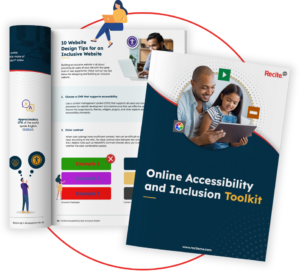
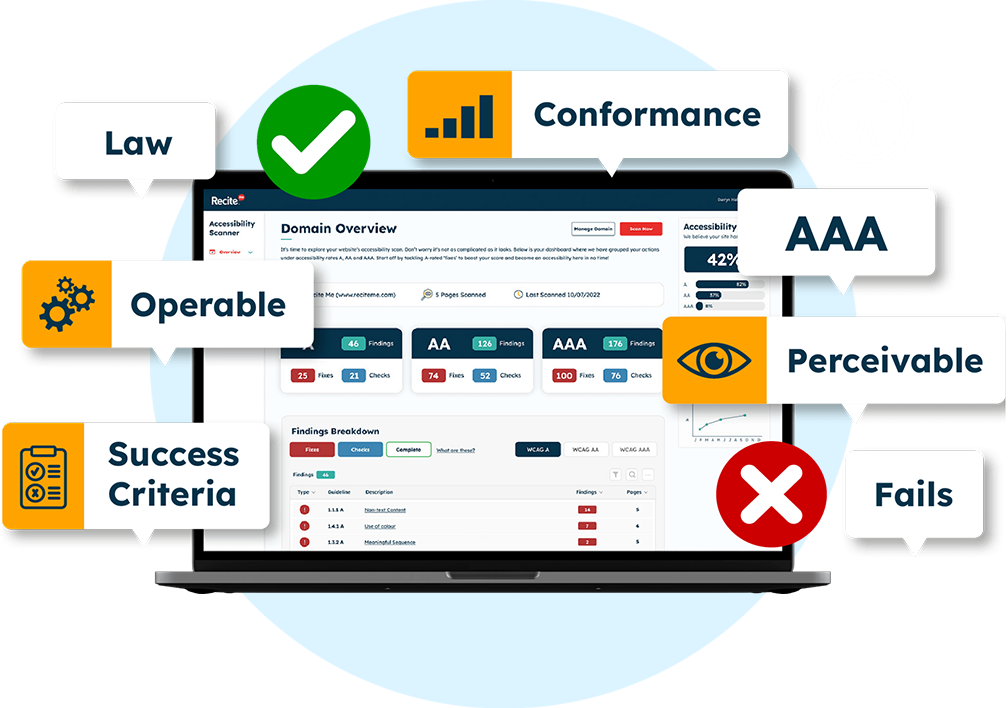
Website Accessibility Checker
Our accessibility checker takes care of accessibility considerations for you, and in doing so, tackles several usability issues. It audits back-end and front-end web development processes by running 396 separate compliance scans in line with WCAG 2.1 and breaks down the issues you should be working to fix. The methodology follows a simple four-step process to help you increase your accessibility score.
Run a Free Check of Your Homepage
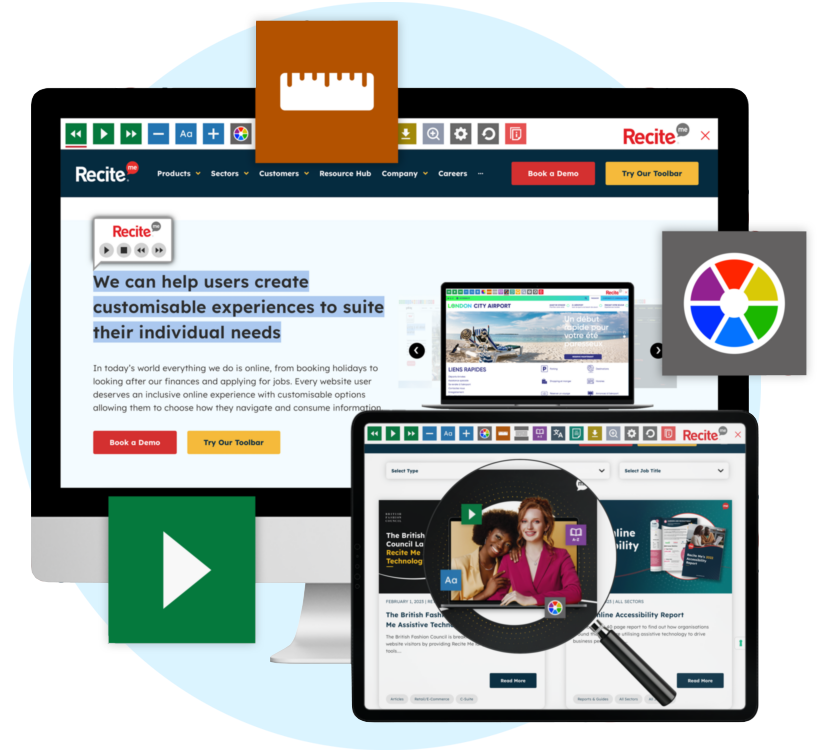
Assistive Toolbar
Our accessibility toolbar promotes online inclusion by allowing end users with sight loss, cognitive impairments, learning difficulties, physical disabilities, and varying linguistic needs to access your website per their individual needs and preferences. Users can make styling changes to the page, translate the content into over 100 on-screen languages, have content read aloud and much more.
Digital Accessibility Data
Recite Me is proud to work alongside several leading organisations dedicated to improving digital inclusion, and our most recent report demonstrates the real-world benefits for businesses. Stats over the last 12 months show that:
- Over 41.3 million web pages have been viewed using the Recite Me toolbar.
- On average, website visitors who use the Recite Me toolbar on utility websites viewed 6.81 pages, much higher than the average internet journey depth of just 2.8 pages per visit.
- Nearly 68 million pieces of content were read aloud using the Recite Me screen reader.
- Over 77.5 million pieces of content were translated into different languages.
Start Your Journey Toward Inclusion Today
Our team is here to guide you on your mission to provide more inclusive recruitment and workplace experiences for your candidates and employees. Get started on your inclusion and accessibility strategy today by working through the following action points:
- Download your free online inclusion toolkit to unlock the power of digital inclusion.
- Use our accessibility checker to run a free scan of your website for WCAG 2.1 AA compliance.
- Take our assistive toolbar for a test drive to see how it works and explore its functionality.
